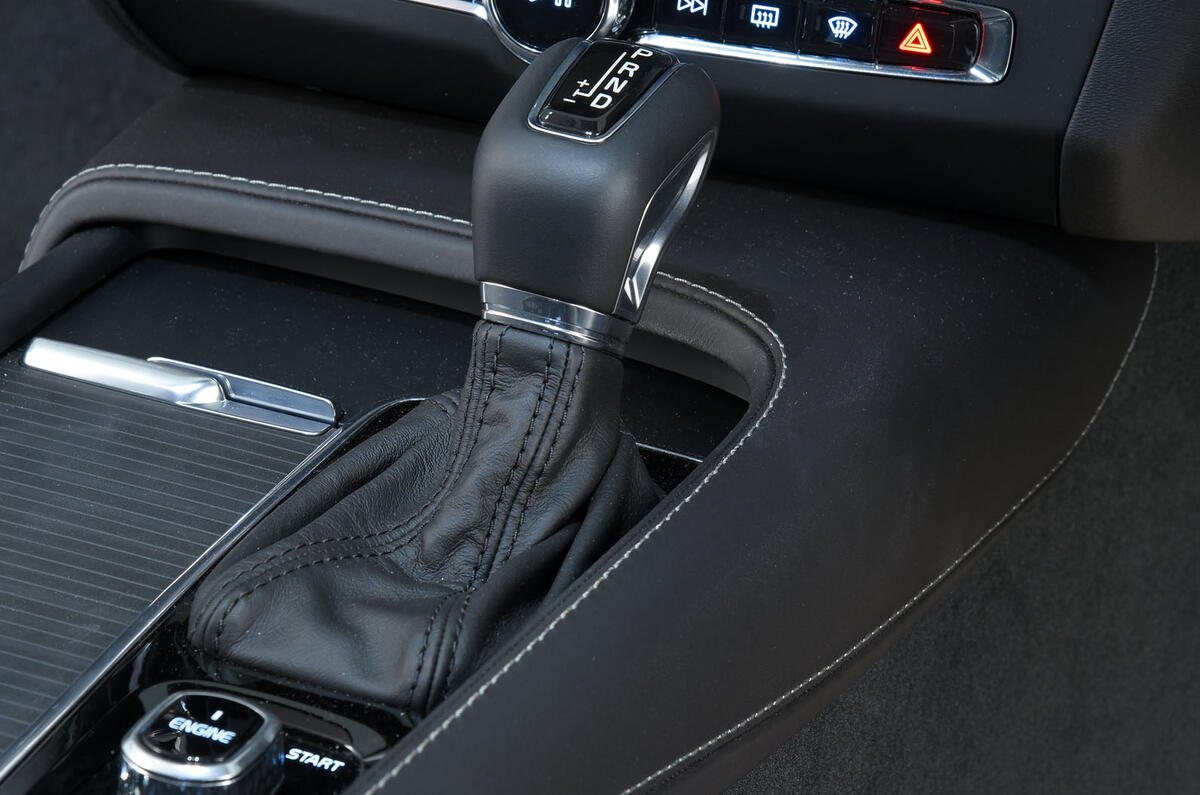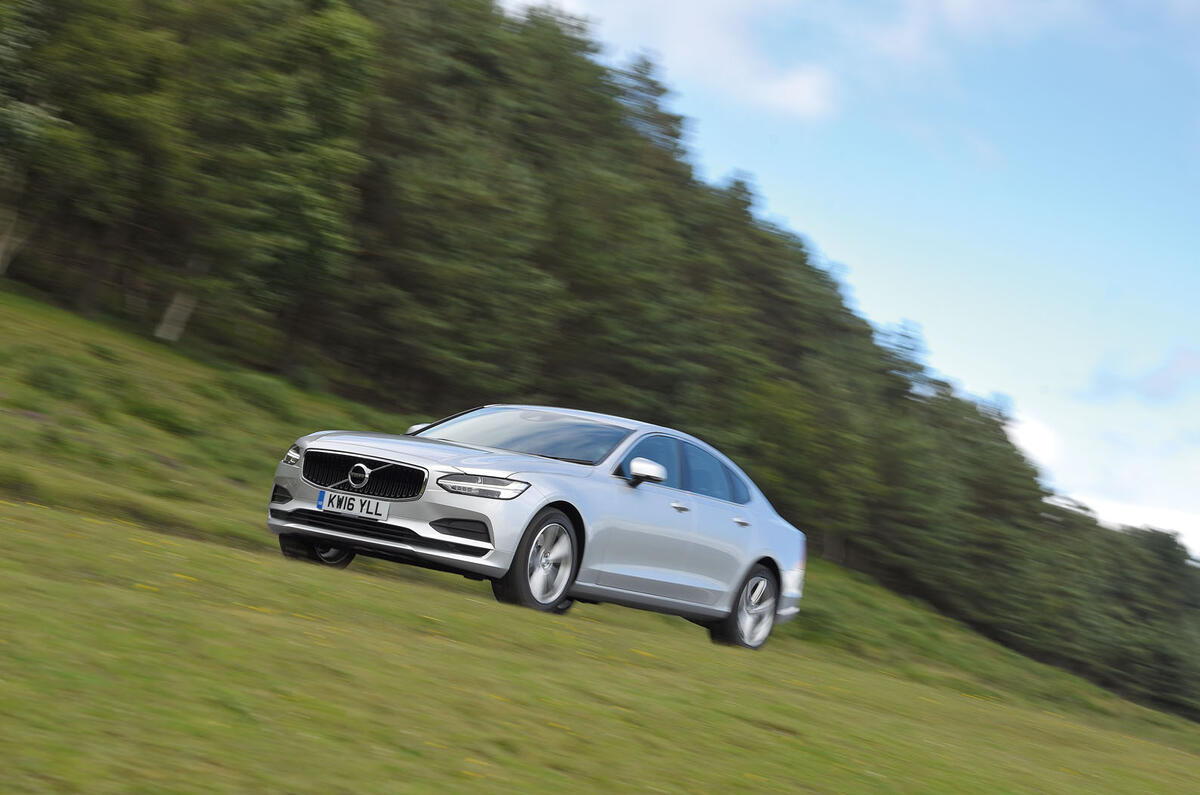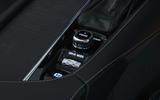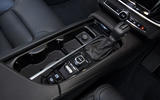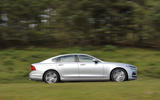Previously, big Volvos have been dependably spacious, conveniently laid out and generally very comfortable.
Certainly, the outgoing S80 was intended to whisk four adults up Sweden’s improbably long arterial A-roads without a murmur of complaint.
What they have lacked, despite statements to the contrary at the time, is the style, finish and panache to compete with rivals from BMW, Audi and Jaguar.
The S90 is intended to meet that challenge head on. It benefits from the approach taken in the XC90, a car formulated with Land Rover-challenging ambience in mind.
As such, the tall dashboard is dominated by the big portrait touchscreen, a system that reduces the requirement for physical switchgear elsewhere.
What’s left is neatly arranged and pleasant to use, despite the odd niggle. (The drive selector, a dimpled spinning wheel, needs rethinking.)
The trim materials in Momentum spec are uniformly worthy – although not every tester was convinced by the beam of faux metal running around the cabin – and conventional dials in the instrument cluster have been acceptably replaced by a standard 8.0in TFT display ahead of a first-rate driving position.
Seating, as you’d expect in a car of this size, is a problem nowhere. Rear passengers expecting a sitting room’s worth of knee clearance ought to be persuaded by the space afforded them and the boot – rated at 500 litres with the underfloor storage – is easily commodious enough for a family’s luggage.
These are traditional Volvo strengths and easy to appreciate – as is the S90’s dignified character and resolute build quality.
Whether the surroundings deliver that final layer of upmarket polish is debatable, though. Our testers were split between a reasonably satisfied yes and an Audi A6-preferring no.
Yet the perception that Volvo has taken a giant stride in the right direction was firmly universal. Few buyers – certainly those accustomed to the manufacturer’s past saloons – will have cause for any feeling north of warm and fuzzy.
There’s a debate to be had about Volvo’s infotainment. On the one hand, the system is admirable; the touchscreen is splendidly large at 9.0in, meaning that its swipe and pinch functions actually make sense and there’s space to accommodate all the features swept on to it from elsewhere.
On the other hand, because the software is not free from niggles and the menus aren’t nearly as intuitive as Volvo thinks they are, the screen does require an awful lot of staring at, head scratching and finger stabbing.
For a company that prides itself on safety, this is not entirely conducive to an eyes-on-the-road driving style.
That said, the Sensus system comes well stocked with desirable features (voice control, web connectivity and satellite navigation are all standard), and for an additional £450 you can get the Volvo On Call app for your smartphone, which allows you to indulge in such novelties as checking your door lock status, fuel level and maintenance warnings and more besides.
For legitimate entertainment, the Momentum features a thoroughly respectable 10-speaker, 330W sound system as standard, as well as a DAB tuner and Bluetooth connectivity. USB ports, though, are limited to just the one.

















